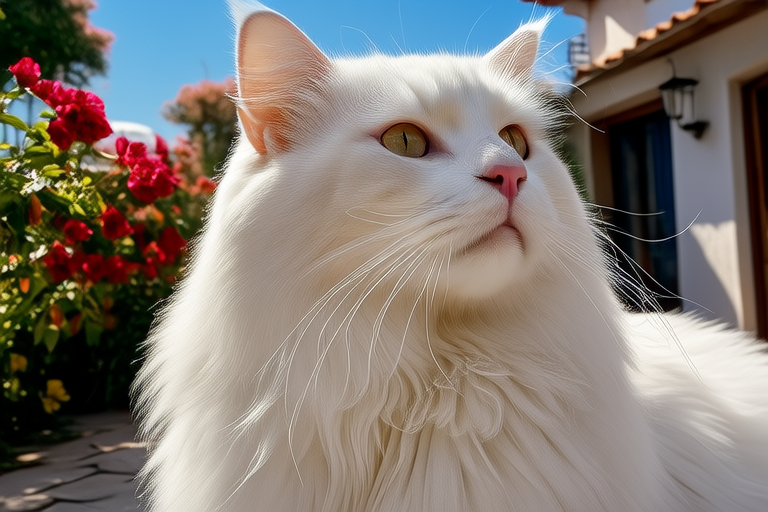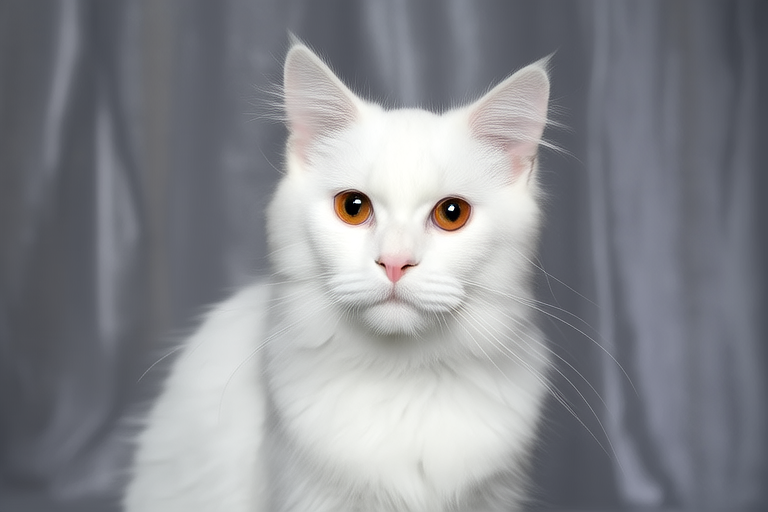
From Ankara to Your Home: Discovering the Unique Traits of Turkish Angoras
Welcome to a journey that begins in the heart of Turkey, where elegance meets grace. The Turkish Angora, a breed of cat that has captured the hearts of many, is not just another feline; it is a piece of history, a symbol of beauty, and a testament to adaptability. This article will guide you through the origins of these magnificent creatures, their distinctive physical traits, and their place in folklore and modern homes.
The Origins of Turkish Angoras
The Turkish Angora originates from the capital city of Ankara (formerly known as Angora), located in central Anatolia, Turkey. This breed has been recognized since ancient times, with evidence suggesting its presence dating back thousands of years. The Turkish Angora was highly valued for its luxurious coat and striking appearance, often being mentioned in historical texts and art. In the 16th century, Turkish Angoras were brought to Europe by traders, where they became popular among nobility and royalty.
These cats have played significant roles in Turkish culture and mythology. They are often associated with good fortune and are believed to bring prosperity to households. Legends speak of their ability to foresee future events, making them cherished companions. The Turkish government has even taken steps to preserve the breed, establishing breeding programs in the 1960s to ensure its survival.
Distinctive Physical Traits
Turkish Angoras are known for their striking appearance, particularly their long, silky white coats and piercing blue eyes. While white is the most common color, they can also be found in various other shades, including black, red, and tabby patterns. Their coats are fine and soft, requiring minimal grooming but benefit from regular brushing to maintain their luxurious texture.
One of the most distinguishing features of the Turkish Angora is its striking blue eyes, which are a result of a genetic mutation. These eyes are large, almond-shaped, and framed by long, elegant whiskers. The combination of their blue eyes and white fur gives them an ethereal look, making them stand out among other breeds. Their bodies are slender and graceful, with long legs and a well-proportioned head. Turkish Angoras are medium-sized cats, weighing between 5 to 9 pounds, with males typically larger than females.
Temperament and Intelligence
Turkish Angoras are known for their playful and affectionate nature. They are highly social animals that thrive on interaction with their human companions. These cats are intelligent and curious, often exploring their surroundings with great interest. They enjoy playing with toys and engaging in activities that challenge their minds. Their playful demeanor makes them excellent companions for families with children or other pets.
Despite their playful nature, Turkish Angoras are also known for their independent streak. They can be quite reserved with strangers but form strong bonds with their owners. They are generally quiet, rarely meowing loudly unless they need attention. Their intelligence allows them to learn tricks and respond to commands, making them trainable pets. Their adaptability to different environments and their ability to form close bonds make them ideal companions for those seeking an interactive and loving pet.
Historical Significance and Myths
The Turkish Angora has held a special place in history, both in Turkey and around the world. In ancient times, these cats were considered sacred and were often kept in temples. They were believed to possess magical powers and were thought to ward off evil spirits. In European courts, they were prized for their beauty and were often given as gifts to royalty.
Legends surrounding the Turkish Angora are abundant. One popular myth tells of a Turkish Angora who saved its owner from a fire by leading them to safety. Another legend speaks of a Turkish Angora who could predict the future and forewarn its owner of impending danger. These stories have contributed to the mystique surrounding the breed and have made them objects of fascination for many.
Care Requirements and Health Considerations
When considering a Turkish Angora as a pet, it’s important to understand their specific care needs. While their coats are generally low-maintenance, regular brushing helps prevent matting and keeps their fur healthy. They are prone to certain health issues, including hypertrophic cardiomyopathy, a type of heart disease. Regular veterinary check-ups are essential to monitor their health and catch any potential problems early.
Turkish Angoras are generally healthy cats, with a life expectancy of 12 to 15 years. Providing them with a balanced diet and plenty of exercise helps maintain their overall health. Obesity can lead to various health complications, so it’s important to monitor their weight and adjust their diet accordingly. Regular play sessions and access to climbing structures help keep them physically active and mentally stimulated.
Common Behaviors and Practical Insights for Owners
Turkish Angoras are known for their playful and energetic behavior. They enjoy climbing and jumping, often reaching high places within their environment. Providing them with cat trees, shelves, and other vertical spaces allows them to explore and exercise their natural instincts. They are also fond of playing fetch and chasing toys, making interactive play a vital part of their daily routine.
These cats are highly adaptable and can adjust to various living conditions, whether in apartments or houses. However, they require a stimulating environment that keeps them engaged and prevents boredom. Puzzle toys and treat-dispensing gadgets can provide mental stimulation and keep them entertained. Turkish Angoras are generally clean cats, grooming themselves regularly, but they still benefit from occasional assistance with grooming.
Owners of Turkish Angoras should be prepared for their vocal nature. While they are generally quiet, they can become quite vocal when they want attention or are bored. Training them to use a scratching post helps prevent damage to furniture and keeps their claws healthy. Positive reinforcement techniques, such as treats and praise, are effective in training these intelligent cats.
Conclusion
The Turkish Angora is a breed of cat that combines elegance, intelligence, and adaptability. From their origins in Ankara to their place in modern homes, these cats have captivated the hearts of many. Their distinctive physical traits, playful nature, and historical significance make them unique and cherished companions. When considering a Turkish Angora as a pet, it’s important to understand their specific care needs and provide them with a stimulating environment. With proper care and attention, a Turkish Angora can bring joy and companionship to your home for many years to come.






